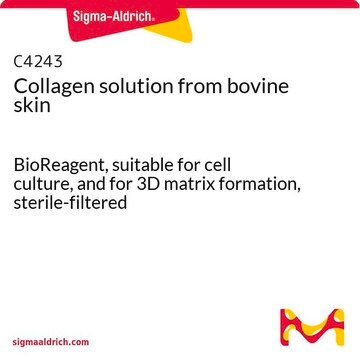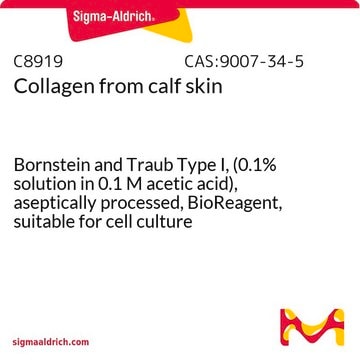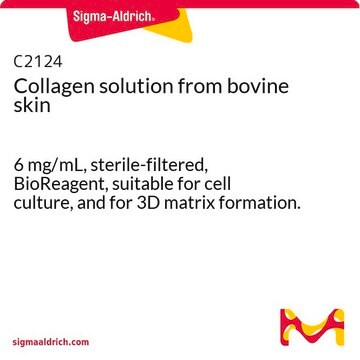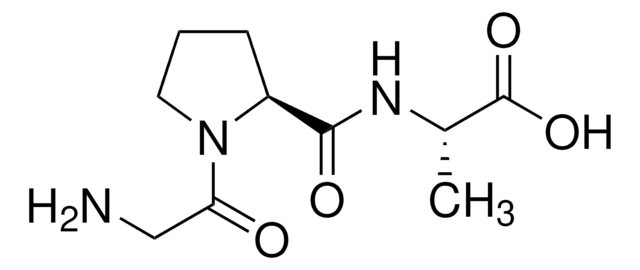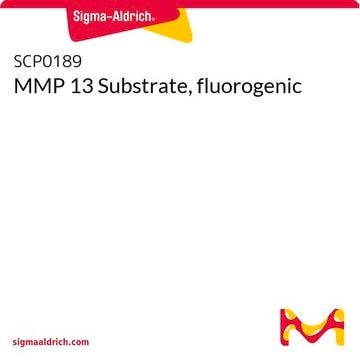C4361
Bovine Collagen Type I
from bovine skin, liquid, 1 mg/mL, FITC Conjugated, used for gel analysis, cell seeding, and collagenase assays
Synonym(e):
Collagen from bovine skin
About This Item
Empfohlene Produkte
product name
Kollagen Typ I−FITC-Konjugat aus Rinderhaut, ~1 mg/mL, solution
Biologische Quelle
bovine skin
Qualitätsniveau
Form
solution
Konzentration
~1 mg/mL
Versandbedingung
wet ice
Lagertemp.
−20°C
Angaben zum Gen
cow ... COL1A1(282187) , COL1A2(282188)
human ... MMP1 (includes EG:4312)
mouse ... MMP1 (includes EG:4312)
rat ... MMP1 (includes EG:4312)
Allgemeine Beschreibung
Anwendung
Biochem./physiol. Wirkung
Physikalische Form
Lagerklassenschlüssel
10 - Combustible liquids
WGK
WGK 1
Flammpunkt (°F)
Not applicable
Flammpunkt (°C)
Not applicable
Persönliche Schutzausrüstung
Faceshields, Gloves, Goggles
Analysenzertifikate (COA)
Suchen Sie nach Analysenzertifikate (COA), indem Sie die Lot-/Chargennummer des Produkts eingeben. Lot- und Chargennummern sind auf dem Produktetikett hinter den Wörtern ‘Lot’ oder ‘Batch’ (Lot oder Charge) zu finden.
Besitzen Sie dieses Produkt bereits?
In der Dokumentenbibliothek finden Sie die Dokumentation zu den Produkten, die Sie kürzlich erworben haben.
Kunden haben sich ebenfalls angesehen
Unser Team von Wissenschaftlern verfügt über Erfahrung in allen Forschungsbereichen einschließlich Life Science, Materialwissenschaften, chemischer Synthese, Chromatographie, Analytik und vielen mehr..
Setzen Sie sich mit dem technischen Dienst in Verbindung.

